During the Cold War, El Salvador was one of many “hot spots” where the United States government allocated millions of taxpayer dollars to train and arm right-wing governments and militias against leftist movements. At the infamous School of the Americas in Panama, the U.S. trained members of El Salvador’s Atlacatl Battalion. This was not a gang of armed radicals, but a disciplined unit with training from the United States’ top military advisors.
The day before the El Mozote Massacre, on Dec. 10, 1981, the right-wing Salvadoran government’s Atlacatl Battalion arrived in the small town of El Mozote, El Salvador, searching for left-wing militia of the Farabundo Martí National Liberation Front (FMLN), with whom they were at war.
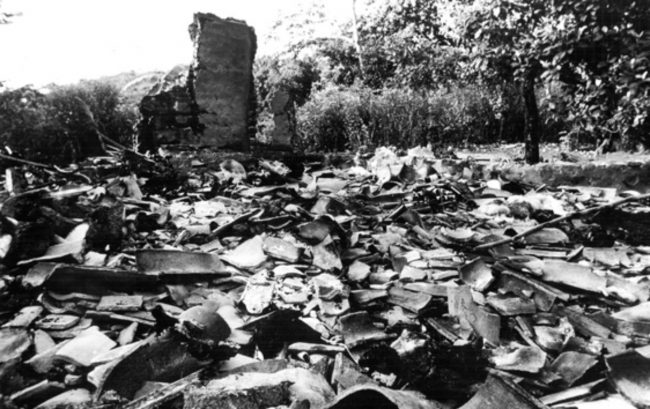
Ruins at El Mozote after members of the Atlacatl Battalion destroyed it during the 1981 massacre. Source: Loyola University Chicago Digital Special Collections
Many Salvadorans on the side of the FMLN were influenced by “Liberation Theology,” an international movement which combines Catholicism with left-wing politics. This led the government’s army to target majority-Catholic villages, priests, nuns, and other Catholic activists. However, one of the most horrific acts of violence of the war was committed against the residents of El Mozote, the vast majority of whom were Protestant. The Salvadoran government knew some of the El Mozote’s residents did business with FMLN guerillas and knew FMLN militants had passed through the hamlets surrounding the main village. So, regardless of their religion or politics, the Salvadoran army murdered the residents of El Mozote because a few were suspected of associating with the left.
The residents were rounded up overnight and the next day, December, 11, were killed. The Atlacatl Battalion maimed, shot, raped, and dismembered hundreds of unarmed men, women, and children. Nearly half of the victims are believed to have been under 10 years old. Estimates of the total murdered on that day range from 200 to over 1,000.
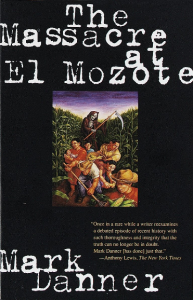
Massacre at El Mozote by Mark Danner reveals this history.
Despite reports by Salvadorans and U.S. journalists, the U.S. government disputed the facts and officials suggested that it was a clash between two armed groups.
The United Nations approved a Truth Commission for El Salvador to investigate the reports of violence from El Salvador between 1992-1993. Forensic anthropologists, ballistics analysts, and pathologists conducted exhumations at El Mozote. They uncovered scientific evidence of up to 200 identified remains and concluded:
All these facts tend to indicate the perpetration of a massive crime, there being no evidence to support the theory of a confrontation between two groups… the physical evidence from the exhumation of the convent house at El Mozote confirms the allegations of a mass murder. [From Madness to Hope: the 12-year war in El Salvador, Report of the Commission on the Truth for El Salvador]
Micah Uetricht and Branko Marcetic wrote of the significance of the massacre in their article “Remember El Mozote” for Jacobin Magazine:
El Mozote showed what the Salvadoran regime was capable of, and what the US government was willing to tolerate, excuse, and cover for in service of supposed anticommunism.
After it became clear that the Atlacatl battalion had decapitated men in a church and bayoneted a child to death and slaughtered entire families, the obvious questions for the Reagan administration were: are these crimes barbaric enough to convince you to change course? Is there any limit to the kind of vile acts you will excuse in order to pursue your foreign policy aims?
The answer to both questions, provided by El Mozote and its aftermath: a resounding “no.”
News outlets were discouraged from covering the full story in 1982, when news began to break. Misinformation and conflicting accounts spread. After the commission’s report in 1993, the story surged in the 2000s and 2010s with new developments.
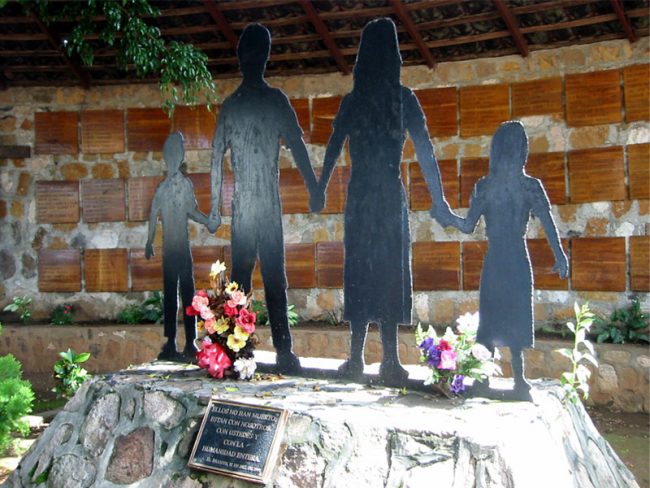
Memorial of massacre site at El Mozote, Morazan, El Salvador. Source: Efrojas, Wikimedia
Learn more about the massacre, and study how mainstream reporting on the massacre evolved over the decades through primary sources, in the following articles: The New York Times in 1982, The Los Angeles Times in 1992, again in The New York Times in 2005, the BBC in 2012, and in Jacobin Magazine in 2016.
Find resources to teach about El Salvador at Teaching Central America and below.

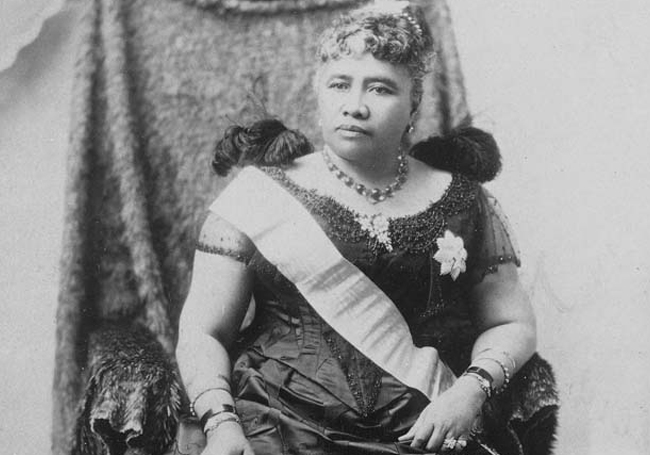
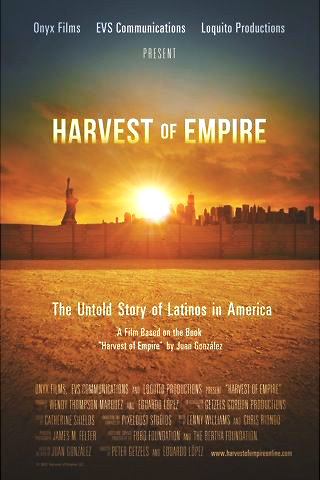
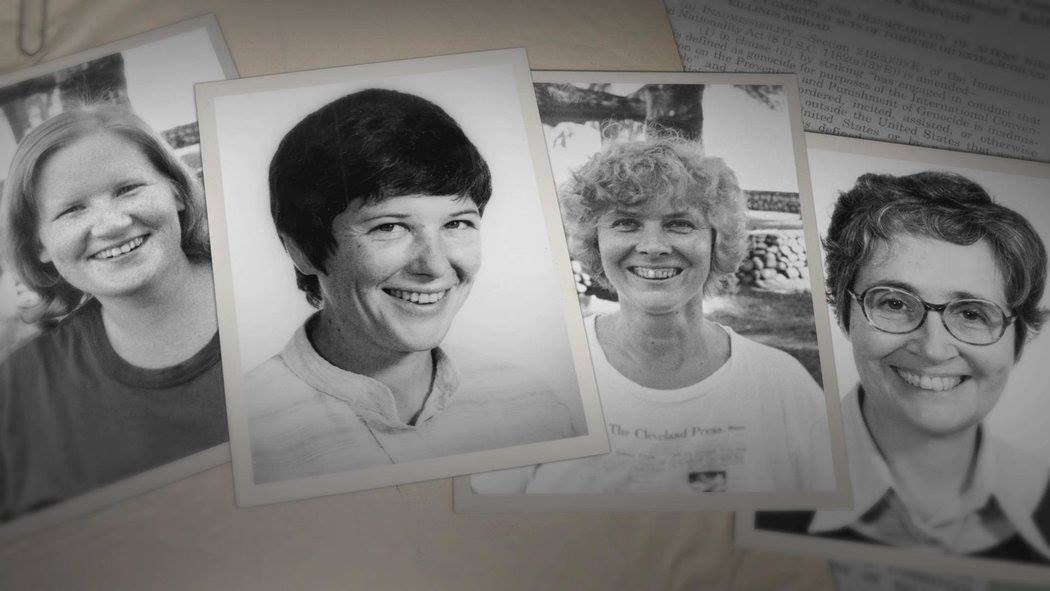
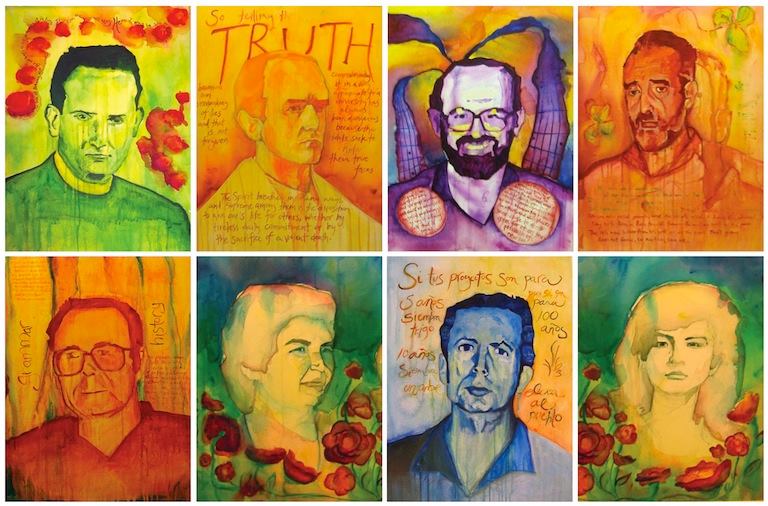
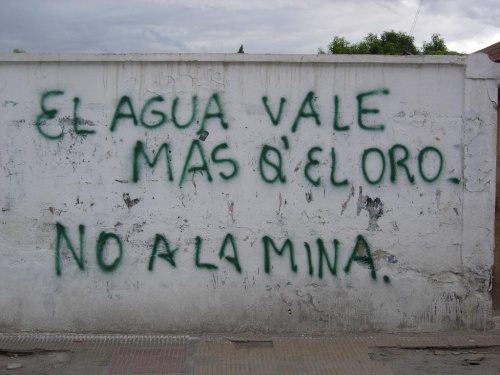





Twitter
Google plus
LinkedIn